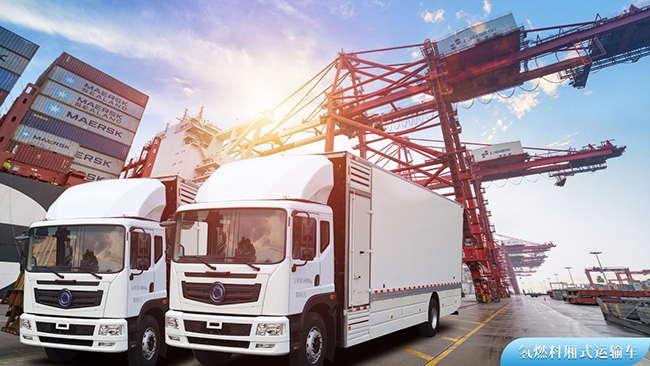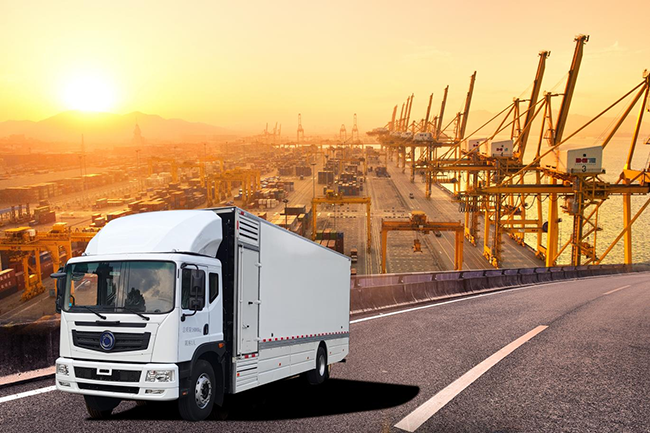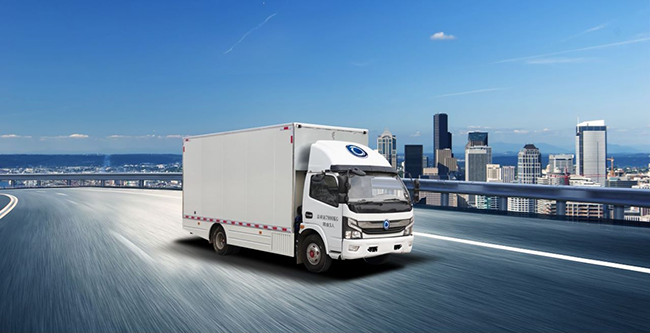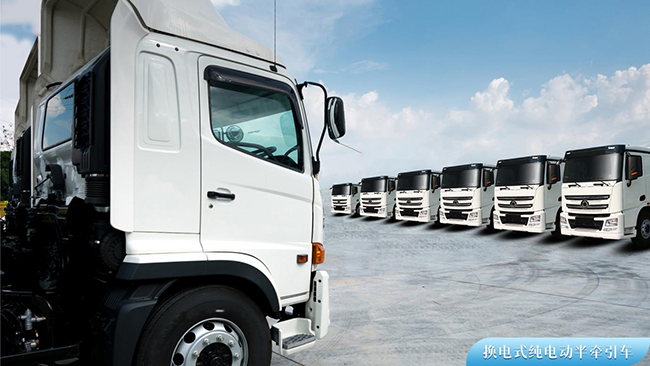As the core equipment supporting logistics circulation, engineering construction, and public services, commercial vehicles have always been deeply bound to policy guidance in their development trajectory. Currently, the low-carbon transformation under the "dual carbon" goal and the intelligent upgrading promoted by "new infrastructure" are forming a policy synergy, reshaping the industry's technological path, market structure, and competitive logic. From the institutional design of carbon credits management to the commercialization of autonomous driving, policy dividends and transformation pressures are intertwined, driving the commercial vehicle industry into a critical period of structural transformation.

1、 Low carbon transformation: policy guidance from "passive compliance" to "active layout"
The focus of carbon emission control in the transportation sector has gradually shifted towards commercial vehicles. Data shows that as the penetration rate of passenger car electrification continues to rise, the proportion of commercial vehicles in road traffic carbon emissions has risen to 70%, becoming a key variable for achieving the "dual carbon" goal. In this context, the policy system is evolving from a single emission standard control to a composite framework of "carbon credit management+technology neutral guidance".
(1) Policy logic: from "limit management" to "full cycle carbon governance"
After seven years of exploration, the commercial vehicle credit policy has clearly transitioned towards carbon management, skipping the traditional dual credit stage and directly entering the field of carbon governance for systematic research. Behind this shift is a profound consideration of industry characteristics: commercial vehicles, as production materials, have a wide variety of vehicle types and diverse usage scenarios, making it difficult to adapt to the enterprise average management model of simply adopting a one size fits all approach for passenger cars. The new policy framework places greater emphasis on the principle of "focusing on the big and letting go of the small", with a focus on areas with high penetration rates such as urban logistics, environmental sanitation, and heavy long-distance transportation. It replaces single limit control with mean management, taking into account both emission reduction effects and industry capacity.

In the long run, policy design is gradually incorporating a full lifecycle concept. In the short to medium term, the focus is on controlling the energy efficiency level of new cars and reducing carbon emissions during the usage phase; In the long term, it will extend to upstream energy attributes and production processes, and even explore the possibility of cross domain trading of carbon credits for passenger and commercial vehicles. This gradient advancement strategy not only responds to the urgent need for emission reduction at present, but also reserves buffer space for industry technological upgrading.
(2) Industry Impact: Accelerating Transformation in Pain
Driven by policies, the process of commercial vehicle new energy has achieved a landmark breakthrough, with the penetration rate of new energy exceeding 20% for the first time in 2024. However, the industry challenges behind the penetration rate are equally prominent: the total number of commercial vehicles decreased by 37% during the same period, and the profitability of enterprises decreased by 63%. Most enterprises are in a loss making state in the transition to new energy. This contradiction stems from the production material attributes of commercial vehicles - users are much more sensitive to purchase costs, range, and energy replenishment efficiency than passenger cars, while the full lifecycle economy of new energy commercial vehicles has not yet been fully highlighted.
The policy is solving this dilemma through "supply side guidance+demand side linkage". On the supply side, the principle of technological neutrality opens up space for diversified emission reduction paths. In addition to pure electric vehicles, technology routes such as hydrogen fuel cells and low-carbon fuels have been recognized by policies, and whoever can achieve effective carbon reduction can be included in the incentive system; On the demand side, direct subsidy policies will be phased out after 2027, and regional policies such as fuel cell demonstration city clusters and battery swapping promotion cities will be used to make precise efforts. This combination of punches promotes the industry's transition from "policy dependent" to "market driven", forcing companies to optimize the cost performance ratio of new energy products.

2、 Intelligent upgrade: acceleration of commercialization landing under policy protection
If low-carbon transformation is a "must answer question" for the commercial vehicle industry, then intelligent networking is a "bonus question" that determines future competitiveness. With the deepening implementation of the "14th Five Year Plan" for the development of intelligent connected vehicles, policies are shifting from the technical verification stage to the commercial operation stage, with precise efforts being made to open up a landing channel for autonomous commercial vehicles.
(1) Policy Breakthrough: From "Test License" to "Paid Operation"
The improvement of the policy system has cleared key obstacles for the commercialization of autonomous driving. At the national level, documents such as the "Management Norms for Road Testing and Demonstration Applications of Intelligent Connected Vehicles" and the "Notice on Carrying out Pilot Work for Intelligent Connected Vehicle Access and Road Traffic" have been successively issued, establishing a system framework from testing to access; At the local level, more than 30 cities including Beijing, Shanghai, and Shenzhen have conducted road tests for intelligent connected commercial vehicles, with a cumulative testing mileage exceeding 120 million kilometers. The second batch of "Vehicle Road Cloud Integration" application pilot projects launched by six departments in 2024 will clearly support L4 level autonomous commercial vehicles to carry out toll operation in restricted areas, becoming a landmark node for commercialization landing.
The construction of the standard system is being promoted synchronously. The classification standards and testing specifications for commercial vehicle autonomous driving have basically taken shape, and supporting regulations such as data security, network security, and responsibility recognition are being improved. The connection between these policies and standards provides clear guidelines for the transition of autonomous driving technology from a "laboratory" to an "industrial field".
(2) Scenario implementation: Closed scenarios achieve profit closure first
Policy dividends have been translated into commercial effectiveness in specific scenarios. Closed scenes such as ports and mining areas have become "test fields" for the commercialization of L4 level autonomous commercial vehicles due to their controllable environment and standardized operations. By the end of 2024, more than 600 autonomous driving trucks have been deployed in major ports across the country, with operational efficiency improved by 15% -20% compared to manual labor, and labor costs reduced by more than 30%. Tianjin Port, Ningbo Zhoushan Port and other places have achieved a stable operation mode of charging by container, with a customer repurchase rate of over 90%. The mining scene has also achieved significant results. Large energy enterprises have deployed L4 level autonomous driving mining trucks, with an annual operating mileage of over 80000 kilometers per vehicle and a failure rate controlled below 0.5 times per thousand kilometers. The market size has reached 5.2 billion yuan by 2024.
The semi closed mainline logistics scene is becoming a new policy focus. The main economic corridors such as Beijing Shanghai and Beijing Guangzhou have opened pilot routes for autonomous driving heavy trucks, achieving dual benefits of reducing operating costs by 12% and improving efficiency by 15% -20% through the "main vehicle+formation" or "human-machine co driving" mode. With the improvement of 5G-V2X infrastructure (with over 28000 roadside units deployed nationwide by the end of 2024), the technical reliability and economy of autonomous driving for mainline logistics are continuously improving, and it is expected that the penetration rate will reach 5% by 2027.
3、 Policy synergy: building a sustainable industrial ecosystem
The two main policy lines of low-carbon and intelligent are not being promoted in isolation, but rather exhibit the characteristics of mutual empowerment and collaborative efforts. This synergistic effect is reflected not only at the technical level, but also throughout the entire process of building the industrial ecosystem.
On the technical level, there is a natural synergy between new energy and intelligence. The electrified chassis of new energy commercial vehicles is easier to carry hardware such as sensors and controllers of the auto drive system, while intelligent algorithms can further reduce power or hydrogen consumption by optimizing energy management, forming the effect of "1+1>2". The policy is promoting this technology integration through pilot projects such as "vehicle road cloud integration" - deploying intelligent connected terminals on new energy commercial vehicles, which not only meets the needs of carbon emission data monitoring, but also provides real-time data support for autonomous driving.
At the industrial level, policy guidance has formed an ecological pattern of cross disciplinary collaboration. In the low-carbon field, energy companies, vehicle manufacturers, and component companies are building cooperative alliances around technology routes such as hydrogen fuel and battery swapping; In the field of intelligence, technology companies are deeply collaborating with traditional host factories to promote the implementation of the "vehicle road cloud" integrated architecture, accelerate the localization and cost optimization of perception, decision-making, and control full stack technologies. The follow-up of the capital market has injected more impetus into this ecological construction. In 2024, the total financing in the field of commercial vehicle autonomous driving reached 8.6 billion yuan, an increase of 35% over the previous year. The investment focus has shifted from algorithm research and development to the construction of operation platforms and the large-scale deployment of vehicle fleets.

4、 Challenge and Outlook: How to Precisely Apply Policies
Although the policy has achieved significant results, the industry still faces many unresolved issues: in the low-carbon transformation, the connection mechanism between national credit policies and regional support policies is not yet sound; In the process of intelligent upgrading, issues such as insufficient cross regional policy coordination and lagging high-precision map updates still hinder the large-scale implementation; At the same time, the supporting systems such as the energy replenishment network for new energy commercial vehicles, responsibility identification and insurance mechanisms for autonomous driving still need to be improved.
Looking ahead to the future, policies need to continue to focus on three dimensions: first, strengthening precision and developing differentiated policies for different scenarios and vehicle models, such as providing special subsidies for heavy-duty hydrogen fuel trucks and cross regional dispatch support for port autonomous driving; Secondly, enhance synergy and establish a coordinated mechanism for low-carbon and intelligent policies to avoid policy fragmentation; The third is to enhance foresight and advance the formulation of standards in emerging fields such as battery recycling and data security, laying a solid foundation for the long-term development of the industry.
From the perspective of industry development laws, policies have always been the key catalyst for commercial vehicle technology iteration and industrial upgrading. Under the dual drive of low-carbon and intelligent policies, the commercial vehicle industry is gradually moving away from the traditional label of "high energy consumption and low efficiency" and transforming into a new form of "cleanliness, intelligence, and efficiency". Although this transformation process is accompanied by pain, it will ultimately reshape the industry value chain and lay the foundation for Chinese commercial vehicles to occupy a strategic high ground in global competition.







